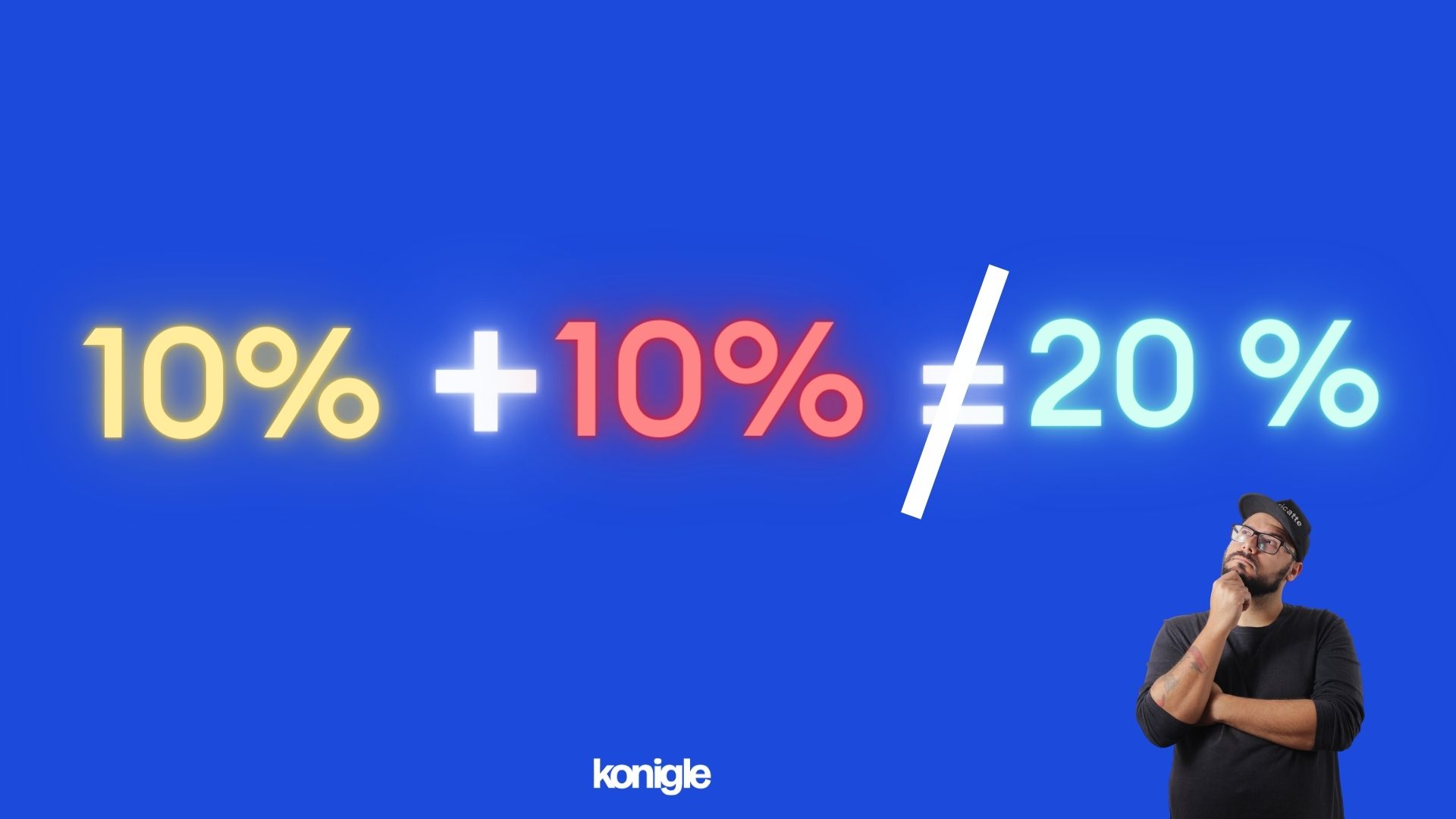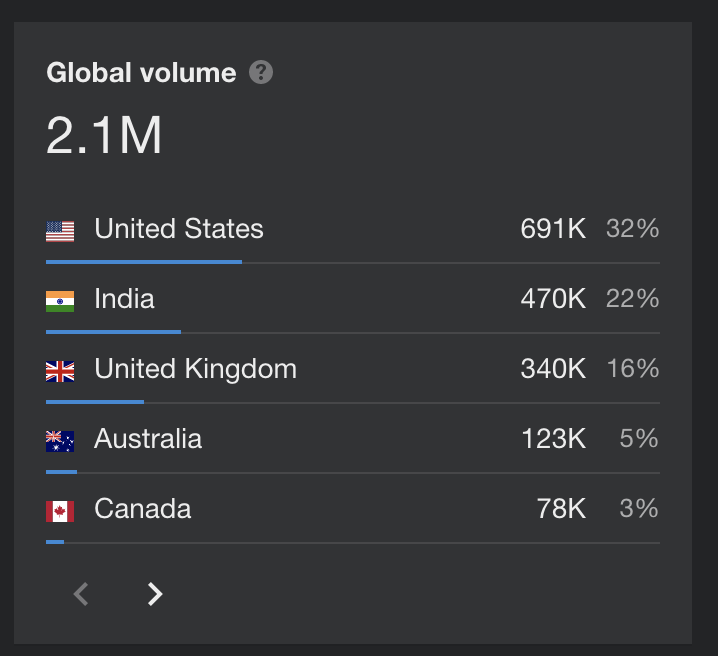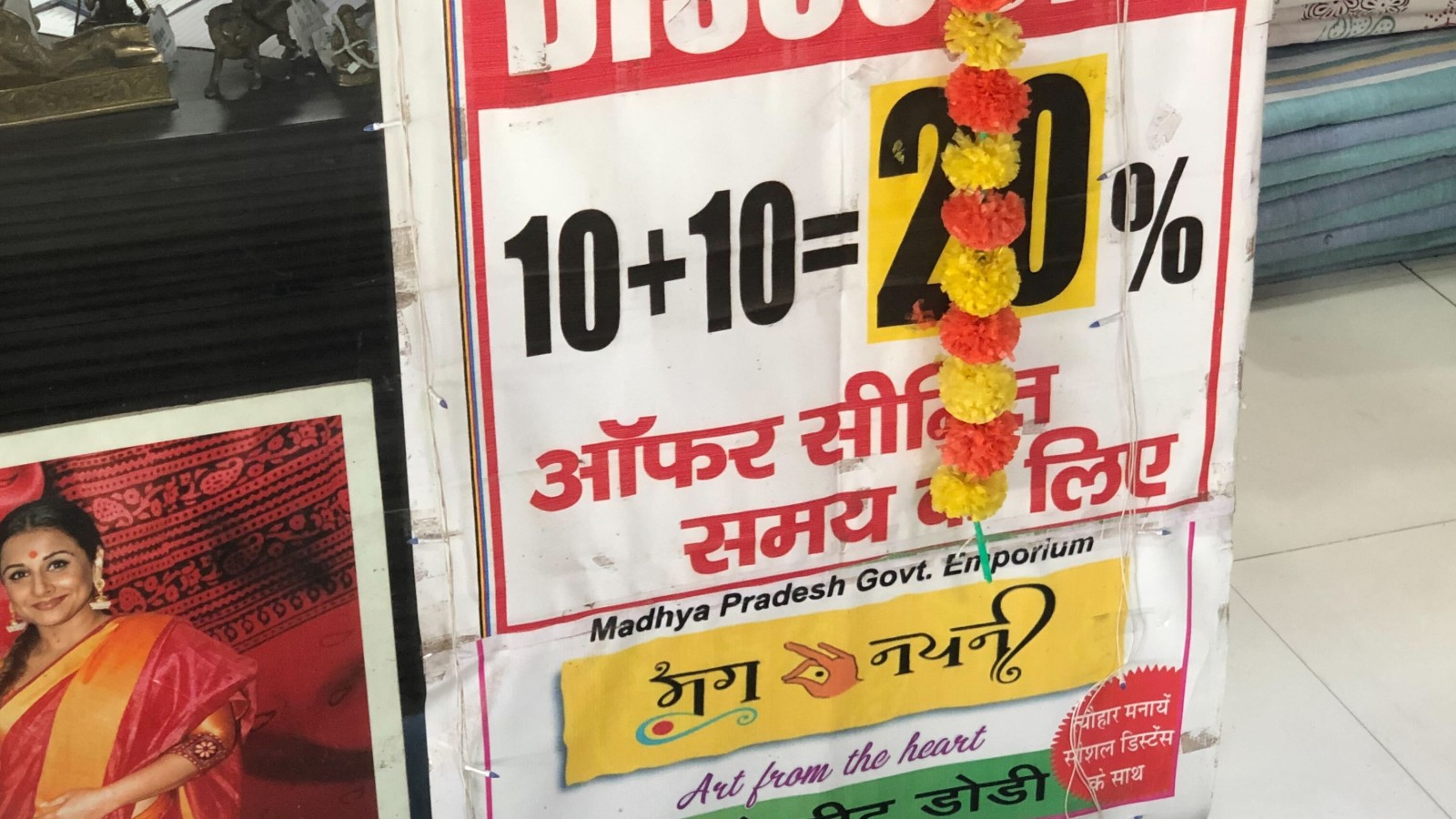Calculating 10% off a price: Easy or Tough ?

I never thought calculating 10% off a price would be something that I would be one day writing about in detail. Although calculating percentages may seem trivial and intuitive, the more I observe the world around me, the more I realize it is not. Consider the following examples:
- My first encounter calculating percentages happened when I was a child, around five years old. My mother showed me how to use a traditional calculator to calculate percentages in the fewest possible calculations and button clicks. At the time, I did not fully appreciate the significance of this, but years later, it made more sense to me.
- When I was in engineering school, I would constantly see people making mistakes calculating percentages. I have also made this mistake many times.
- When we first launched the Bulk Price Editor, one of the first Shopify stores to sign up reached out to us complaining that Konigle had incorrectly calculated the discount percentage. They pointed out that 10% + 10% off a price is 20% and not 19% calculated by Konigle, and I had to explain that it is actually 19%. This was not intuitive for them.
- This made me dig a bit more into this and searching on an SEO analytics tool, like Ahrefs below, we find that almost 2.1 million searches a month happen on Google looking for a percentage calculator. Yes 2.1 million searches a month !

In fact on a trip to my hometown in India, post my marriage I saw this outside a store selling sarees.

But what pushed me to write about this was when one of my colleagues wrote this while discussing pricing strategies.
If you have an online store and purchase an item from a manufacturer supplier for $50 and sell it to your customer for $100. Then the gross margin of that item is 50 percent. ‐ A smart human
Calculating percentages has to be the Achilles heel of mathematical calculations for sure. If someone sells a product for 2x the cost, they are actually making a 100% margin, not a 50% margin. Even someone as smart as you can make an error. This illustrates that calculating percentages is not always intuitive.
Let's consider a scenario where someone decides to use bulk edit product prices filtered by price to update prices across their entire store. They aim to sell their products at a 50% margin, so they double the price by two times the cost price. However, would this strategy actually result in more profits?
What if a higher price leads to lower demand and customer complaints? This is neither intended nor correct. I understand the challenges of busy store owners. For example, a West Indies store owner who is running a business, taking care of her mother-in-law and two kids, managing her boutique, and tracking inventory. Pricing products can be difficult, and mistakes can be demoralizing. The owner may even start blaming herself, thinking that if she cannot calculate percentages, she should not be running a business and that may be the reason why her business is not growing.
Hence to prevent busy online merchants getting tripped by non intuitive mathematical calculations we have built highly intuitive filters into the Bulk Price Editor.